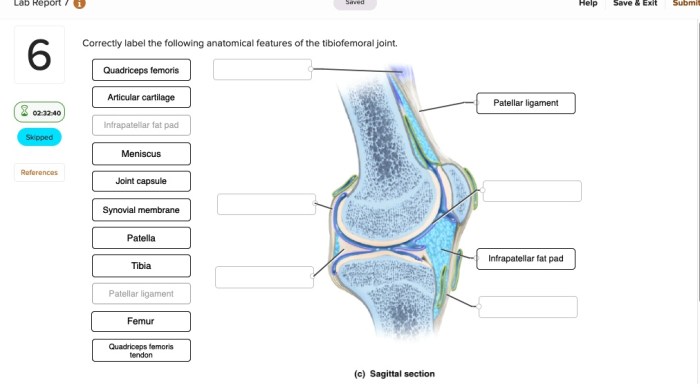Correctly label the following anatomical features of the knee joint. – Correctly labeling the anatomical features of the knee joint is crucial for understanding its intricate structure and function. This comprehensive guide delves into the essential components of the knee joint, providing a clear and concise overview of its anatomy.
The knee joint, located at the junction of the femur, tibia, and patella, plays a pivotal role in locomotion and weight-bearing activities. Understanding the interplay between its bones, ligaments, cartilages, and muscles is paramount for proper diagnosis and treatment of knee-related conditions.
Anatomical Features of the Knee Joint

The knee joint is a complex hinge joint located between the femur (thigh bone), tibia (shin bone), and patella (kneecap). It allows for flexion and extension of the leg and plays a crucial role in weight-bearing, stability, and locomotion.
Bones of the Knee Joint, Correctly label the following anatomical features of the knee joint.
The knee joint is formed by the articulation of three bones:
- Femur (thigh bone)
- Tibia (shin bone)
- Patella (kneecap)
Function of the Knee Joint
The knee joint performs several essential functions:
- Weight-bearing:Supports the body’s weight and distributes forces during activities like standing, walking, and running.
- Stability:Provides stability to the lower limb, preventing excessive movement and ensuring proper alignment.
- Locomotion:Enables flexion and extension of the leg, allowing for movements such as walking, running, and jumping.
FAQ Insights: Correctly Label The Following Anatomical Features Of The Knee Joint.
What are the major bones that form the knee joint?
The femur, tibia, and patella.
What is the function of the menisci?
To provide cushioning and stability to the knee joint.
Which ligament is responsible for preventing excessive backward movement of the tibia?
The posterior cruciate ligament.


